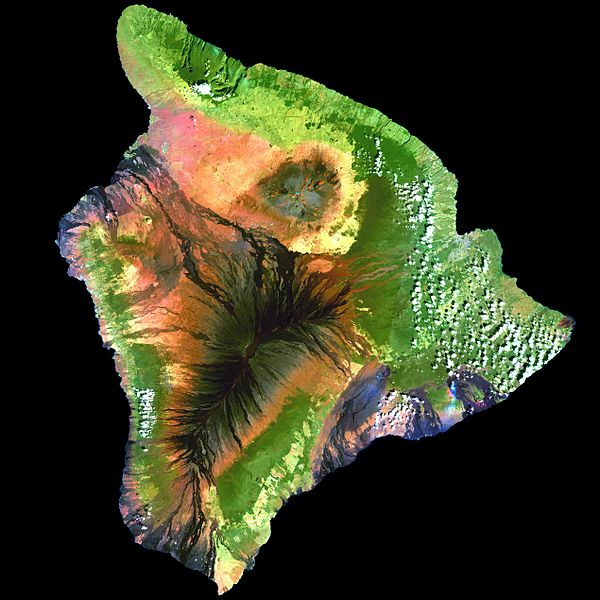Файл:Island of Hawai'i - Landsat mosaic.jpg

Размер этого предпросмотра: 600 × 600 пкс. Другие разрешения: 240 × 240 пкс | 480 × 480 пкс | 768 × 768 пкс | 1024 × 1024 пкс | 2048 × 2048 пкс | 5076 × 5076 пкс.
Исходный файл (5076 × 5076 пкс, размер файла: 5,19 Мб, MIME-тип: image/jpeg)
История файла
Нажмите на дату/время, чтобы посмотреть файл, который был загружен в тот момент.
| Дата/время | Миниатюра | Размеры | Участник | Примечание | |
|---|---|---|---|---|---|
| текущий | 11:59, 1 сентября 2009 |  | 5076 × 5076 (5,19 Мб) | Túrelio | saved with 95% quality (low compression), but without "progressive" option |
| 11:59, 1 сентября 2009 |  | 5076 × 5076 (4,9 Мб) | Bidgee | Fix thumbnail generation issue caused by progressive loading. | |
| 11:31, 1 сентября 2009 |  | 5076 × 5076 (4,91 Мб) | Rocket000 | reuploading | |
| 11:52, 27 декабря 2007 |  | 5076 × 5076 (4,91 Мб) | Avenue | {{Information| |Description=This simulated true-color image of the island of Hawai'i was derived from data gathered by the Enhanced Thematic Mapper plus (ETM+) on the Landsat 7 satellite between 1999 and 2001. |Source=[http://veimages.gsfc.nasa.gov/2712/l |
Использование файла
Следующие 2 страницы используют этот файл:
Глобальное использование файла
Данный файл используется в следующих вики:
- Использование в af.wikipedia.org
- Использование в ar.wikipedia.org
- Использование в ast.wikipedia.org
- Использование в az.wikipedia.org
- Использование в be.wikipedia.org
- Использование в bn.wikipedia.org
- Использование в br.wikipedia.org
- Использование в ca.wikipedia.org
- Использование в ceb.wikipedia.org
- Использование в cy.wikipedia.org
- Использование в de.wikipedia.org
- Использование в de.wikivoyage.org
- Использование в en.wikipedia.org
- Hawaii (island)
- Mauna Loa
- Landsat program
- Geoinformatics
- Puna, Hawaii
- User:Spikebrennan
- Portal:Hawaii/Selected article
- Portal:Hawaii/Selected article/11
- Wikipedia:Featured picture candidates/February-2008
- Wikipedia:Featured picture candidates/Big Island of Hawai'i
- User:Hawaiian Mafia
- User:Aoi/sandbox
- Использование в es.wikipedia.org
- Использование в es.wikibooks.org
- Использование в eu.wikipedia.org
- Использование в fa.wikipedia.org
- Использование в fr.wikipedia.org
- Использование в fr.wikivoyage.org
- Использование в ga.wikipedia.org
- Использование в haw.wikipedia.org
- Использование в he.wikipedia.org
- Использование в hi.wikipedia.org
- Использование в hu.wikipedia.org
- Использование в ia.wikipedia.org
- Использование в id.wikipedia.org
- Использование в incubator.wikimedia.org
- Использование в is.wikipedia.org
- Использование в ja.wikipedia.org
Просмотреть глобальное использование этого файла.
